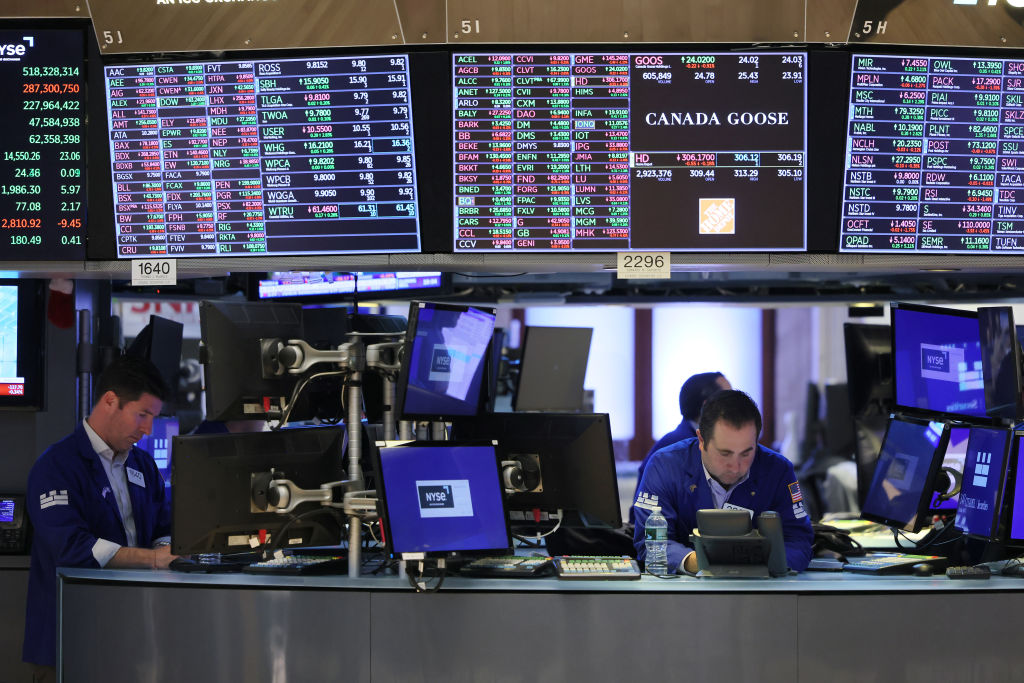A heart-stopping day that characterized Wall Street yesterday. The S&P 500 erased a loss of 2.4%, posting a substantial + 2.6% at the end of the day. Never before has the market experienced such extreme reactions in both directions in one day, according to Bloomberg data dating back to 1990.
The Dow Jones rebounded around 1,400 points from the intraday lows tested earlier in the session when investors initially reacted very badly to US inflation data which highlighted the core component rising to new highs over 40 years.
Many possible explanations
Such a sudden turnaround is difficult to explain. Traders were ready for a new wave of sell orders if inflation, as it did later, remained high with the core component still advancing. At first it was like that with 10-year Treasury yields that shot up to 4.07% and Nasdaq dropped 3%. Then the 360-degree turn with the flood of buy orders on Wall Street and the deflating of bond yields. “There were so many people prepared for a big decline after the CPI number that when they saw no follow-through to the downside, the short sellers panicked and started buying,” said Matt Maley. Miller Tabak & Co.’s chief market strategist
“What is behind the reversal remains questionable – he argues Gabriel Debach, market analyst at eToro -. Some point to technical supports as the reason for the rebound, others to option hedgers, who found themselves forced to close short positions when investors took profits from put options during the sell off. Finally, we should also not forget the first glimmers of hope within the earnings season results ”. Yesterday the banking sector led the upside and today there will be the accounts of Morgan Stanley, JP. Morgan, Citi and Wells Fargo.
Biden unusually optimistic after CPI reading
Among the reasons behind the big rebound there are also some that look to Putin’s openness to dialogue. “It frankly seems very simplistic, given that these openings arrive every other day”, comments Giuseppe Sersale, Strategist of Anthilia Capital Partners Sgr, who instead finds it interesting to look at the reaction of the White House to the inflation numbers, perhaps dictated by the looming of Midterm Elections. Both Biden and his economic adviser indulged in unusually optimistic comments. “CPI report shows some progress in the fight against high prices but more work needs to be done,” says Biden.
But the main reason for the counter-reaction remains, according to Sersale, that in the short term, on the downside, this market had nothing more to give. Thanks to the Fed pounding, the news was in the prices, and the market was extremely short and pessimistic. “Once the flows of something traders, have been covered. Which may have weighed, why not, the gaining consensus of the opinion that the CPI, and in particular many of the components that push it upwards, are lagging ”.
Inflation and expectations for next Fed moves
After the release of the inflation data, the markets have priced the arrival of a fourth consecutive squeeze of 75 basis points by the Fed in the next meeting on 1-2 November, with a probability of 98%. The probability of a fifth consecutive rate hike of 75 basis points at the end of the year also increased to 62%.
Traders are now betting on a round of monetary tightening from Powell & Co that will bring rates to close to 5% before the central bank ends the hikes in the spring of 2023. Expectations are on fed funds rates up to 4.9% by next April, compared to 4.65% priced the day before yesterday.
Returning to the data, in September the US consumer price index rose on a monthly basis by 0.4%, double compared to expectations, accelerating the pace compared to the previous + 0.1%. The core component – net of the prices of energy and food goods – jumped by 0.6% on a monthly basis, over the estimated + 0.5% and as in September.
